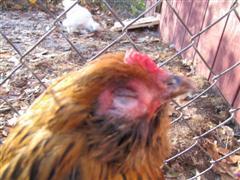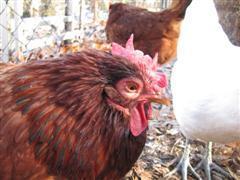- Jul 20, 2010
- 213
- 40
- 111
Most of the time, with any of the antibiotics, you're basically treating secondary infections. The eye goop and/or any nasal discharge is often the result of a secondary bacterial infection brought on by the 'main' virus that weakened their symptoms. With mild(er) strains of MG, it's fairly common for symptoms like the eye goop, watery nostrils, or sneezing (and facial swelling if it's due to the congested respiratory issues) to go *poof* relatively quickly with treatment. Continue to treat with what you were using for the full duration OR if you find that it's not quite kicking it *all* the way as treatment goes on, you may have to switch to something that's found to be a bit more effective on CRD type illnesses. If you stop the meds too soon just because they seem to be on the mend, you set them up for a rebound infection with the potential to allow the secondary bacterial infection gain some resistance to the antibiotics.
One of the "tests" for most antibiotic treatments is that you should see significant improvement by the 3rd day of treatment. If you've treated with something for 3 full days and see NO significant improvement, it's time to evaluate the active ingredient in the medication... what you're treating may not be sensitive to that antibiotic. So, it's GOOD and exactly what you're looking for when you see a good turn around on the 2nd or 3rd day. What often happens with MG is there can be lingering symptoms (not always, though) after treatment with the milder antibiotics like you're using. If you find they "stall out" in improvement by the end, reconsider treating with a more targeted med.
Some MG infected birds show very few symptoms at all during the acute stages... it's the secondary infections when(if) they set in due to the additional weakness in their immune system that can really kick some birds' little tail feathers! Like you've seen, really great improvement happens really quickly if you're using a med that targets the secondary infection they have developed.
Unfortunately, it doesn't mean anything in terms of them being infected with MG (or whatever it may be) and becoming contagious carriers. You're just seeing the antibiotics work like they should, within the 3 days that you SHOULD see significant improvement.
One of the "tests" for most antibiotic treatments is that you should see significant improvement by the 3rd day of treatment. If you've treated with something for 3 full days and see NO significant improvement, it's time to evaluate the active ingredient in the medication... what you're treating may not be sensitive to that antibiotic. So, it's GOOD and exactly what you're looking for when you see a good turn around on the 2nd or 3rd day. What often happens with MG is there can be lingering symptoms (not always, though) after treatment with the milder antibiotics like you're using. If you find they "stall out" in improvement by the end, reconsider treating with a more targeted med.
Some MG infected birds show very few symptoms at all during the acute stages... it's the secondary infections when(if) they set in due to the additional weakness in their immune system that can really kick some birds' little tail feathers! Like you've seen, really great improvement happens really quickly if you're using a med that targets the secondary infection they have developed.
Unfortunately, it doesn't mean anything in terms of them being infected with MG (or whatever it may be) and becoming contagious carriers. You're just seeing the antibiotics work like they should, within the 3 days that you SHOULD see significant improvement.




